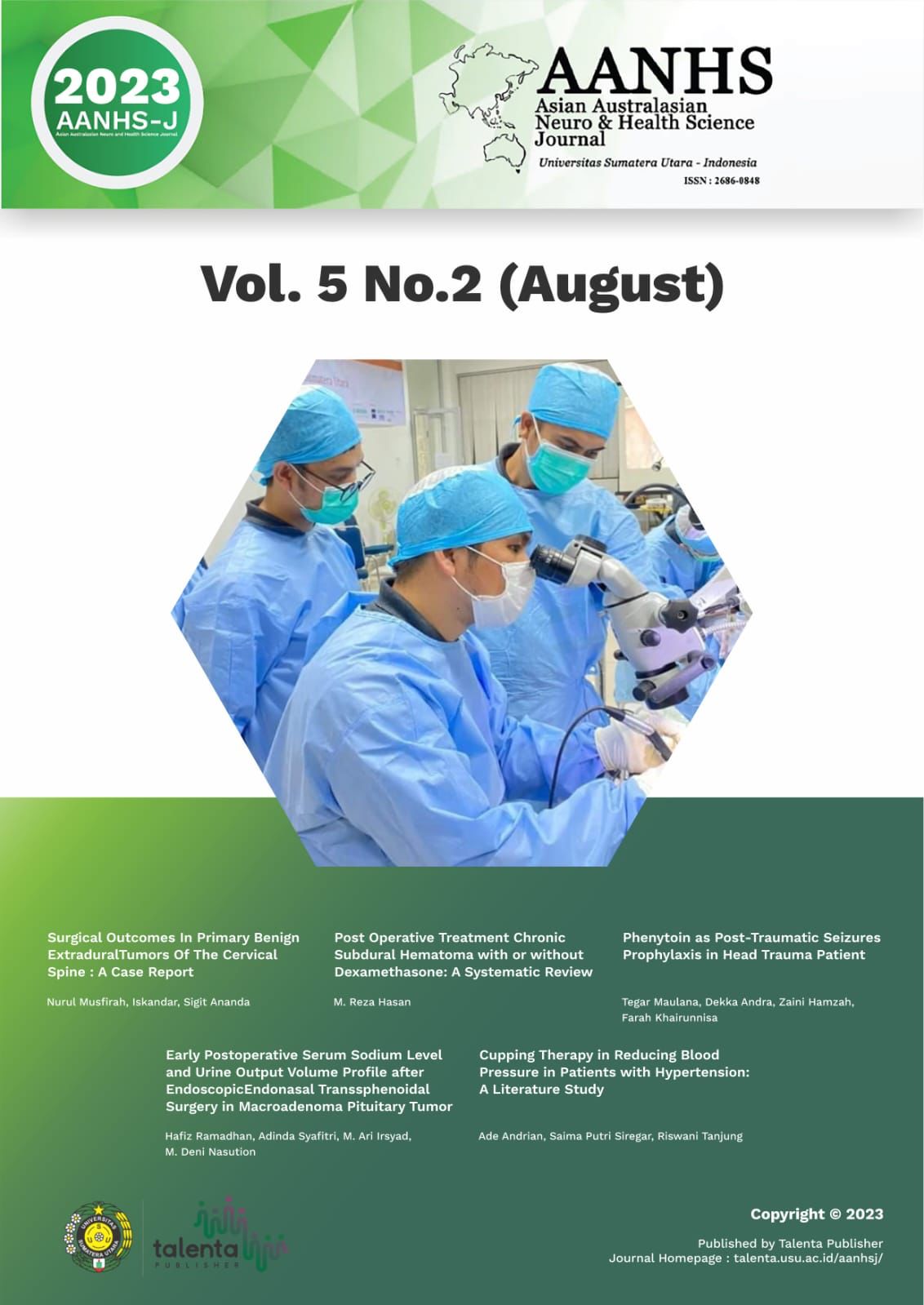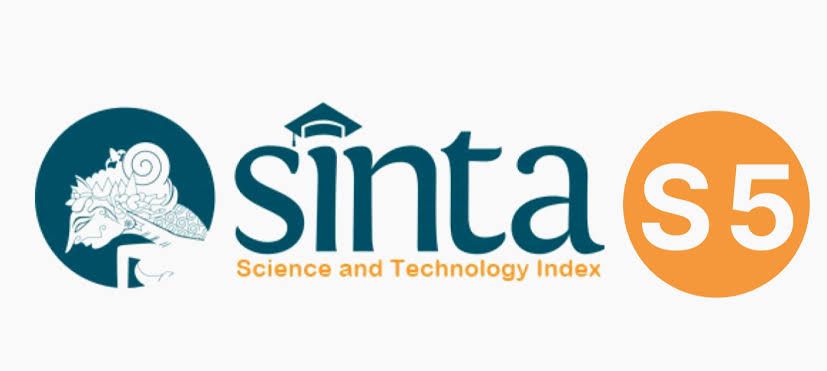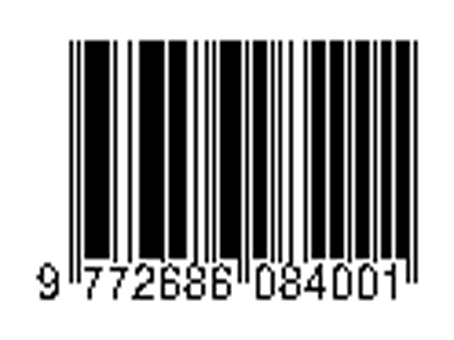Post-operative Treatment Chronic Subdural Hematoma with or without Dexamethasone: a Systematic Review
DOI:
https://doi.org/10.32734/aanhsj.v5i2.12010Keywords:
Burr-hole craniostomy, Chronic subdural hematoma, Dexamethasone, RecurrenceAbstract
Abstract
Introduction: Discovering If the post-operative patient is given dexamethasone or without dexamethasone, it can cause recurrence of Chronic Subdural Hematoma patients. This systematic review aims to summarize the research on the link between dexamethasone and recurrent chronic subdural hematoma.
Methods: We present systematic reviews reported according to the preferred reporting items for systematic reviews and meta-analyses (PRISMA) and adhere to a structured review protocol. We searched PubMed, ScienceDirect, and British Medical Journal databases using the following search strategy from inception to March 2023.
Results: Four studies were included for further analysis. CSDH can be treated as medical, surgical, or both medical surgeries. Medical treatment for post-traumatic and post-operative prophylaxis of seizures and for preventing edema and ischemia. Anticonvulsant agents can be cut off after a few weeks if post-operative seizures do not appear at all. Surgery has been shown to be most effective in the treatment of cSDH. The evacuation of subdural collections forms the basis of the surgery in cSDH. After treatment, residual subdural fluid collections are standard. The most critical and dangerous complications of surgical treatment of acute post-operative bleeding.
Discussion: Chronic subdural hematoma is an event of head bleeding that occurs for more than three weeks. It can be examined using CT (Computed Tomography). Often occurs in parents. The operation was carried out using the burr-hole method, and post-operative treatment can be given using dexamethasone. Recurrent bleeding may occur in patients with chronic subdural hematoma.
Downloads
Downloads
Published
How to Cite
Issue
Section
License
Copyright (c) 2023 Asian Australasian Neuro and Health Science Journal (AANHS-J)

This work is licensed under a Creative Commons Attribution-ShareAlike 4.0 International License.
The Authors submitting a manuscript do understand that if the manuscript was accepted for publication, the copyright of the article shall be assigned to AANHS Journal.
The copyright encompasses exclusive rights to reproduce and deliver the article in all forms and media. The reproduction of any part of this journal, its storage in databases and its transmission by any form or media will be allowed only with a written permission from Asian Australasian Neuro and Health Science Journal (AANHSJ).
The Copyright Transfer Form can be downloaded here.
The Copyright form should be signed originally and sent to the Editorial Office in the form of original mail or scanned document.














